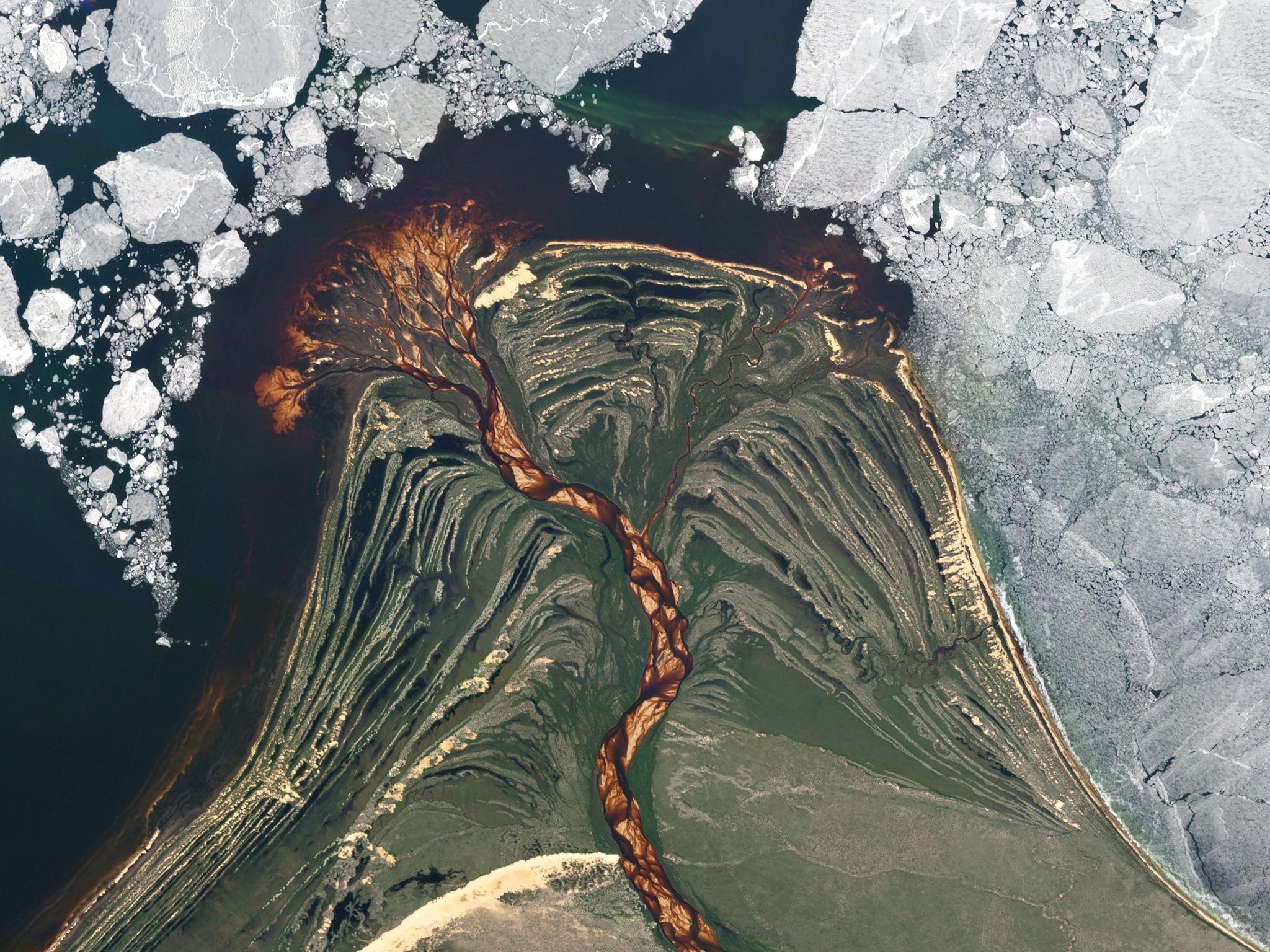Researchers Across Academia are Generating Ground-breaking Discoveries with Planet Data
Planet’s Education and Research Program provides researchers, academics, and scientists with the ability to see change on the Earth in real-time. In the hands of these experts, our satellite data is helping to power models, reveal planetary change, and deliver spatial-temporal insights across a variety of academic fields. Our team at Planet has been thrilled to see the broad range of places and subjects that these ground-breaking researchers have chosen to explore. Read about their exciting findings using Planet data:
Cultural Heritage
Dr. Adam Smith at Cornell University leverages high resolution SkySat to better understand destruction of cultural heritage sites in areas around the world.
“Archaeologists at Cornell and Purdue University are using SkySat imagery to monitor hundreds of cultural heritage sites at risk due to the Nagorno-Karabakh conflict between Armenia and Azerbaijan. In 2020, Planet imagery allowed Caucasus Heritage Watch (CHW) to detect the destruction of historic cemeteries, damage to museums and churches, and emerging threats to the integrity of numerous monuments,” said Dr. Smith. “CHW’s findings were recently used as evidence in a case before the International Court of Justice, contributing to a significant ruling that sets a new precedent for cultural heritage protection worldwide.”
Vegetation Growth
Dr. D. Ichikawa at the Center for Research and Application of Satellite Remote Sensing of Yamaguchi University, Japan observes active rice paddy fields with PlanetScope data.
“We use PlanetScope data to estimate rice growth status and to map active paddy rice fields in Yamaguchi prefecture of Japan. The use of PlanetScope ortho tiles has shown significant improvement in our estimate of rice growth indicators as vegetation indices and mapping accuracy. PlanetScope has great advantages with high observation frequency and 3 meter spatial resolution compared with other MS optical satellites. Another challenge of our research is the integrated use of optical constellation satellite and SAR data for monitoring soil-vegetation productivity of agricultural land area. The optical constellation PlanetScope and SAR data have been processed and analyzed for the agricultural land area of central JAVA of Indonesia. PlanetScope allows a multi-temporal analysis with Sentinel-1 SAR imagery for three planting seasons in this region.”
Ecology
Dr. Kyle Cavanuagh at the University of California - Los Angeles works with PlanetScope data to quantify and measure the extent and health of kelp forests off the shore of Northern California.
“We have been using Planet imagery to map kelp cover along the coast of Sonoma and Mendocino counties following a collapse in kelp forests that occurred in 2014. This collapse has had substantial negative impacts on the ecology and economy of coastal northern California,” explained Dr. Cavanuagh. “We developed a method to map kelp canopy from PlanetScope imagery and created annual kelp maps between 2016-2021. This data allowed us to find ‘kelp refuges’, small areas that were able to persist in the face of the regional kelp collapse. We have also documented a partial recovery in kelp abundance between 2020 and 2021.”
Air Quality
Dr. Michael Bergin and Dr. Tongshu Zheng at Duke University are using PlanetScope’s high spatial and temporal resolution to identify dangerous particulate matter known as PM2.5 in urban spaces.
“[Our paper] shows neighborhood level hot spots [of PM2.5] in Delhi,” explained Dr. Bergin. “Planet data is going to be revolutionary in characterizing air pollution in a way that will result in mitigation strategies that will greatly improve human health. The overarching theme is that using Planet data with recent advances in AI is going to result in a much cleaner environment and a more healthy world.”
Sustainable Agriculture
Dr. Elia Scudiero at the University of California - Riverside and his research group utilize PlanetScope and SkySat to monitor agriculture in the southwest region of the United States.
“The University of California - Riverside is leading a USDA-funded multi-state project on Artificial Intelligence to support sustainable agriculture in the US Southwest. UCRiverside is leveraging information from PlanetScope imagery to: map soil properties at high resolution, estimate crop water requirements, and map crop type in real-time that will help growers reduce the environmental footprint of irrigated agriculture,” said Dr. Scudiero. “Additionally, UCRiverside is using PlanetScope data and Planet educational support to train students and postdocs in the field of agricultural data science.”
Deforestation to Nuclear Reactors
Dr. Jennie Murack at MIT is using PlanetScope data for a range of projects from monitoring nuclear reactors to urban development.
“Planet has been a valuable research tool for our students, staff, and faculty. It provides access to consistent, regularly-collected imagery at a higher resolution than what is available through other sources,” said Murack. “The data have been used by nearly every department on campus for projects ranging from monitoring nuclear reactors to assessing deforestation to exploring building renovations in cities.”
Each month, researchers are using our data to contribute new knowledge to this world, asking daring questions, advancing modern science, and broadening our understanding of society and the planet. We are honored to be supporting academics in their pursuit of this knowledge, and we look forward to showcasing more researchers soon.
Learn more about how Planet’s Education and Research Program could help with your research here.Be sure to check out our Publications page to see published academic articles using Planet data, and don’t forget to follow us on Twitter to see the latest papers highlighted on #ScienceWednesday.

Ready to Get Started
Connect with a member of our Sales team. We'll help you find the right products and pricing for your needs


